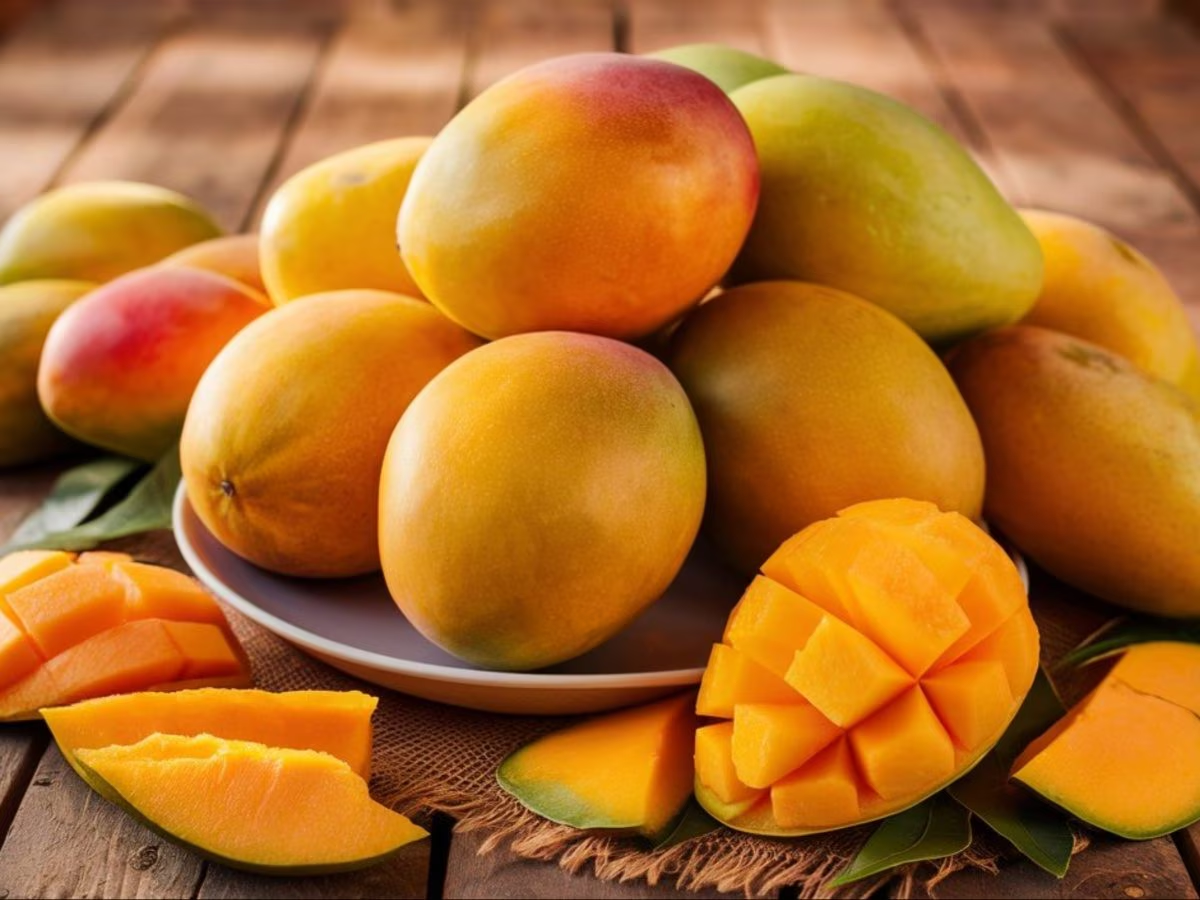 Image Source: News18
Image Source: News18
India’s mango markets are experiencing a sharp and early-season price crash, with rates falling by up to 60% in some regions. A combination of record domestic production, early harvesting ahead of monsoons, and a surge in imported fruits has led to a supply glut, pushing prices for premium varieties like Dasehri, Totapuri, and Langra to multi-year lows.
What’s Behind the Price Drop?
-
Bumper harvest: Uttar Pradesh alone is expected to produce over 35 lakh metric tonnes of mangoes this year, up from 25 lakh MT in 2024.
-
Early harvesting: Farmers rushed to pluck mangoes before the onset of monsoon rains, leading to premature market saturation.
-
Imported competition: A wave of imported apples, pineapples, and stone fruits has diverted consumer attention and shelf space.
-
Delayed procurement: Mango pulp factories in Andhra Pradesh’s Chittoor and Tirupati are yet to begin buying, citing leftover stock from last year.
-
Regional trade restrictions: Andhra Pradesh’s ban on mango imports into Chittoor has disrupted supply chains for Telangana growers.
Voices from the Ground
“My Badami mangoes are selling at ₹30–40 per kg—barely enough to pay workers,” said K. Venkateswar Rao, a farmer from Khammam, Telangana. “Pulp factories haven’t started procurement as they still have leftover stock from last year,” added Sudhir Reddy, a trader from Tirupati.
In Indore, where over 100 tonnes of mangoes arrive daily, prices have dropped to as low as ₹10 per kg in bulk, yet demand remains sluggish.
What’s Next?
With the mango season expected to continue for another 6–8 weeks, farmers are calling for government intervention, export incentives, and faster procurement to prevent further losses. Meanwhile, consumers are enjoying a rare treat: premium mangoes at bargain prices.
Sources: Telangana Today, Free Press Journal, Economic Times, News18
Advertisement
STORIES YOU MAY LIKE
 Image Source: Communications Today
Image Source: Communications Today
 Image Source: Youtube
Image Source: Youtube
Advertisement





